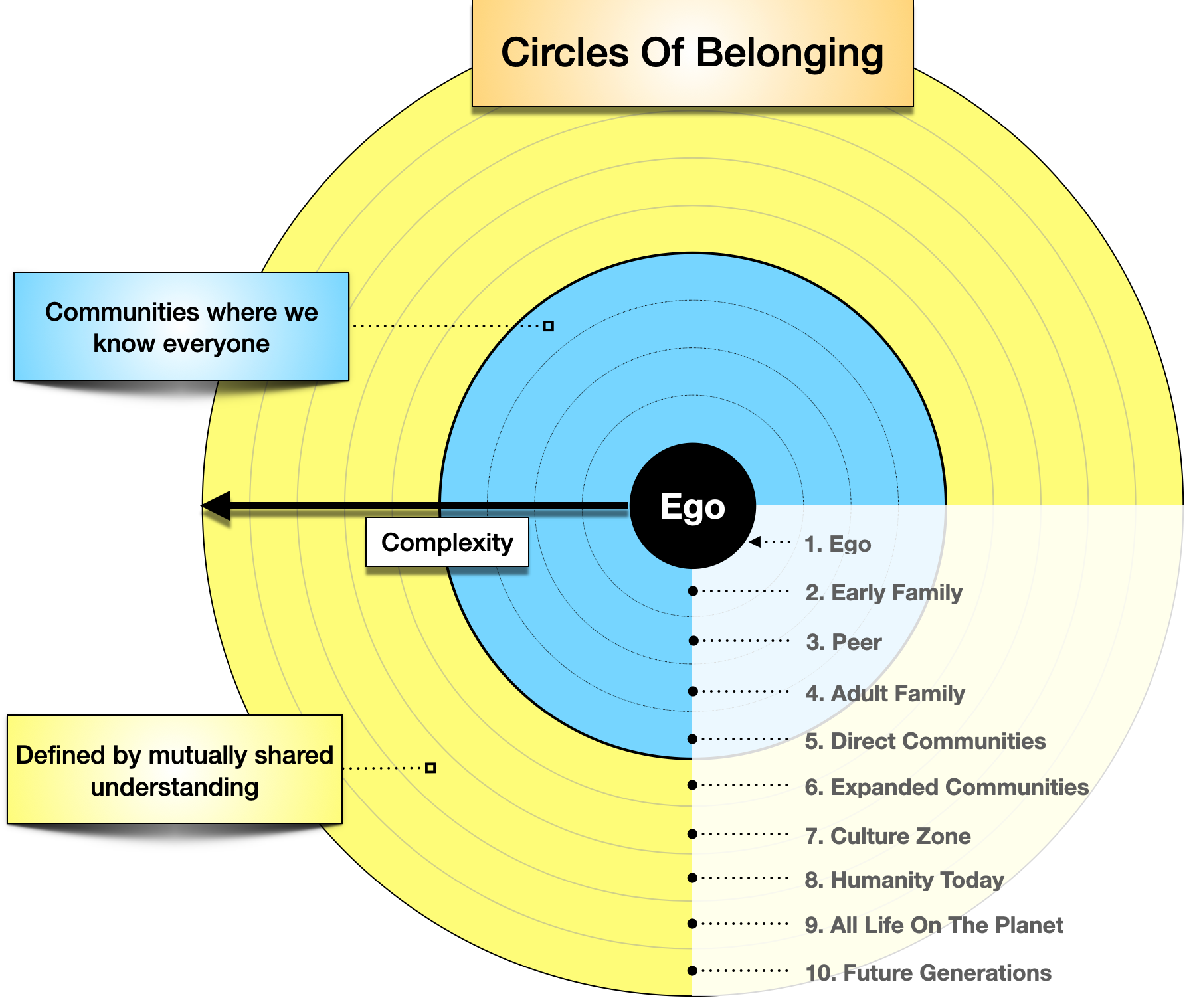One & Many, Bildung Part 3 (#61)
The Circles of Belonging represent the increasingly larger and complex communities we contribute to as we grow.

This article carries forward a theme introduced in Paradox Pair #59: Naivety & Mastery and continued in Paradox Pair #60: Transferable & Experienced Knowledge — that of the German concept of bildung.
Bildung: the German tradition of self-cultivation wherein philosophy and education are linked in a manner that refers to a process of both personal and cultural maturation. -Wikipedia
The third element of bildung is the "expansion of the sense of responsibility". This can be best demonstrated by the following image depicting a series of concentric circles, beginning with ourselves, the ego as the nucleus, called the Circles of Belonging. Each circle represents a growing population who share likeminded values, increasing in complexity the further outward we travel.

We must first have awareness and responsibility of our minds and bodies, a solo belonging, the beginning of a life-long journey. Investment in ourselves establishes a foundation for building healthy relationships as our interactions with others grow. This starts in youth as we develop our individual identity. We then recognize that there are units larger than ourselves, first to include our immediate family and caregivers, those that are helping us to develop.
As our experiences grow so, too, do our circles. We begin to join and shape peer groups, such as classmates in school, a sports team, or our neighborhood friends. There may be a multitude of peer groups, with overlap between communities. Peer groups change over time, waxing and waning as our interests and circumstances evolve. This carries us through to adulthood where we establish relationships with our families in new ways, discarding the constraints of childhood and updating our adult family norms. By ring level 5, direct communities, we have reached the boundaries of the people we can know and see regularly.
Expanding beyond direct communities requires us to identify and define values that are shared with others, even those we never meet, defined as imagined communities. In these populations we are joined together by a collective narrative, a shared definition and a common set of values. This could be a religious denomination, supporting the same sports team, or that we work in the same industry. Cultural bonds form another tribe, allowing us to identify with our heritage, region, language, or history. By level 7 we have well established ethics which steer our behaviors and beliefs, these too can form a community and provide a sense of belonging.
By level 8, the humanity zone, we define the shared traits that make us human, encompassing the global population. Here we have the opportunity to declare our common human rights, how to protect and improve the welfare of humanity. Moving into the next two circles has us include all life on the planet, biomes and ecosystems for all creatures, and future generations and generations beyond those. We recognize our responsibility for a timeline that stretches far beyond ourselves.
For those of a fixed mindset and little empathy, who see threats to their values, fear drives them to recede from the outer rings, becoming more isolated the further they retreat. The narrowing circles reduce the exposure to diversified thought and experiences, accelerating a process that leads to an echo-chamber of closed minded others.
To fully contribute to all communities, we must first invest in the self. It is the introspective individual who has earned the honor to engage with the many, contributing to our communities, culture, humanity, and supporting all life on the planet.
The Paradox Pairs series is an exploration of the contradictory forces that surround us. A deeper study finds that these forces often complement each other if we can learn to tap into the strength of each. See the entire series by using the Paradox Pairs Index.




